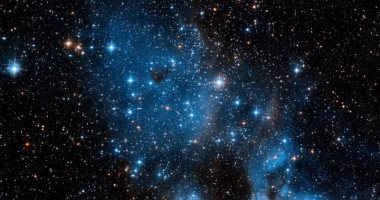The Hubble Space Telescope recently captured an image of a beautiful star cluster called NGC 1858, located in a region rich in star-forming regions. This region is part of the Large Magellanic Cloud, one of the Milky Way galaxies, located at 160,000 light-years away and is believed to be around 10 million years old.
The Large Magellanic Cloud is one of several satellite galaxies of the Milky Way, smaller galaxies gravitationally linked to our galaxy.
Together with its companion, the Small Magellanic Cloud, it orbits the Milky Way and will eventually collide with our galaxy billions of years from now, according to Digitartlends.
The particular star cluster is a type called an open cluster, meaning it is not tightly bound by gravity like some other structures and has an irregular shape.
Also, the amount of dust and gas present here means it could be classified as an emission nebula, as light from stars in the region ionized the gas and caused it to emit its own light.
These features make this region of scientific interest to learn about star formation.
“The stars within this young cluster are in different stages of their evolution, making it a complex group,” the Hubble scientists said. “In NGC 1858, the researchers detected a protostar, a very young nascent star, indicating that star formation within the cluster may have been active or stopped very recently.
The presence of an emission nebula also indicates that star formation here occurred recently, because the radiation needed to ionize the gas in the nebula comes from stars that live only for a short time. “
The image was taken using both visible light and infrared waves.
Although Hubble operates primarily in the visible light range, its instruments can also examine some infrared regions, allowing researchers to build a more complete picture of complex dust and gas structures such as nebulae.

